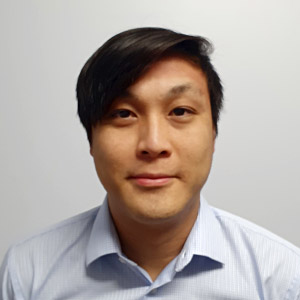Industry projects help foster student research and interpersonal skills
Before beginning his industry placement with leading biotechnology company CSL, Master of Engineering (Chemical) student Ivan Truong admits he wasn’t sure what to expect.
The placement was part of Ivan’s Industry Project. Despite some initial apprehension about the role … when I was on placement, I felt like I was one of them; I was actually a researcher,
Ivan says.
Headquartered in Parkville, CSL is a global leader in the research, development and manufacture of biotherapies and influenza vaccines to treat and prevent chronic medical conditions. The chance to work at the cutting edge of biomedical research, with its life-saving potential, was a huge draw card for Ivan.
We often associate saving lives with frontline medical workers, which is definitely true,
he says. But the research, development and manufacture of life-saving medicine is also an integral part of our healthcare system. I think that cannot be any more evident than right now.

Taking on the challenge
Students undertaking the Industry Project subject are placed in an industry setting and, with expert guidance from industry supervisors, plan and conduct an independent project. During his three-month placement, Ivan reviewed computational models of the human complement system; part of our immune system.
I think of the complement system as the alarm of our immune system,
he says. The proteins in this complement system are always in our bloodstream in an inactive form. When a foreign substance such as bacteria is present, it activates the complement system in a sequential manner to signal to our body the presence of foreign substances to react to.
In the past, researchers tended to look at the components of the system individually,
Ivan says. However, our immune system is so complex and interlinked that to predict its response we really need to analyse the system as a whole. New simulation methods developed at the University are allowing us to do this.
Ivan’s work involved critical analysis of existing models, each with different approaches and assumptions. From there, he built a kinetic model for the complement system and compared results from his model against published data.
I had many meetings with my industry and academic supervisors to present my findings and to discuss various challenges,
he explains. Different models employ different assumptions, algorithms and workarounds. To build a model like this, you need to look beyond the basics and really understand the intricacies of the maths, computational techniques and, of course, biology.
Skills development
Ivan was particularly struck by the multidisciplinary basis of modelling biological systems. He had his University academic supervisor plus three industry supervisors at CSL: one from biomedical engineering, one from chemistry and another from biochemistry. Everyone came from a different background and I started learning to approach everything from a holistic perspective.
Knowing that the work he was doing could contribute to deeper knowledge of human health was rewarding. The work was about getting a better understanding of our immune system and hopefully using this, not only to optimise pre-clinical therapeutics, but also to identify potential new therapeutic targets for future drug design.
While the technical skills Ivan developed during his placement will be crucial for career success, he says the personal development was his biggest breakthrough.
The placement allowed me work on my soft skills. It also really helped me develop my critical thinking and analytical skills. I had to look past the data and analyse for myself how reliable a model was. This Industry Project also gave me the confidence to know I would enjoy working in this field once I graduate.
Related topics
Team up with our students Industry Project (CHEN90028) Chemical and biochemical engineering study options Biomedical engineering study options